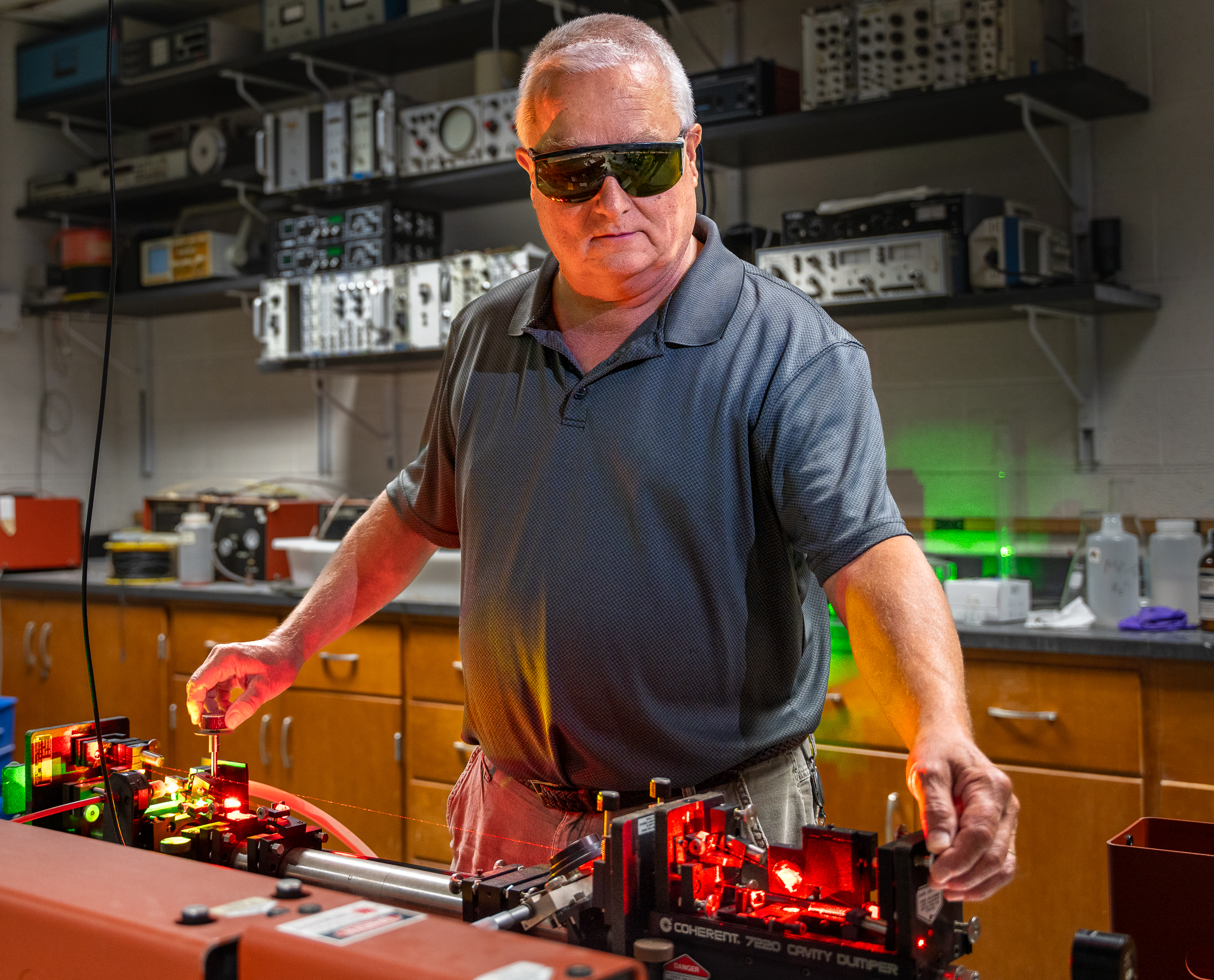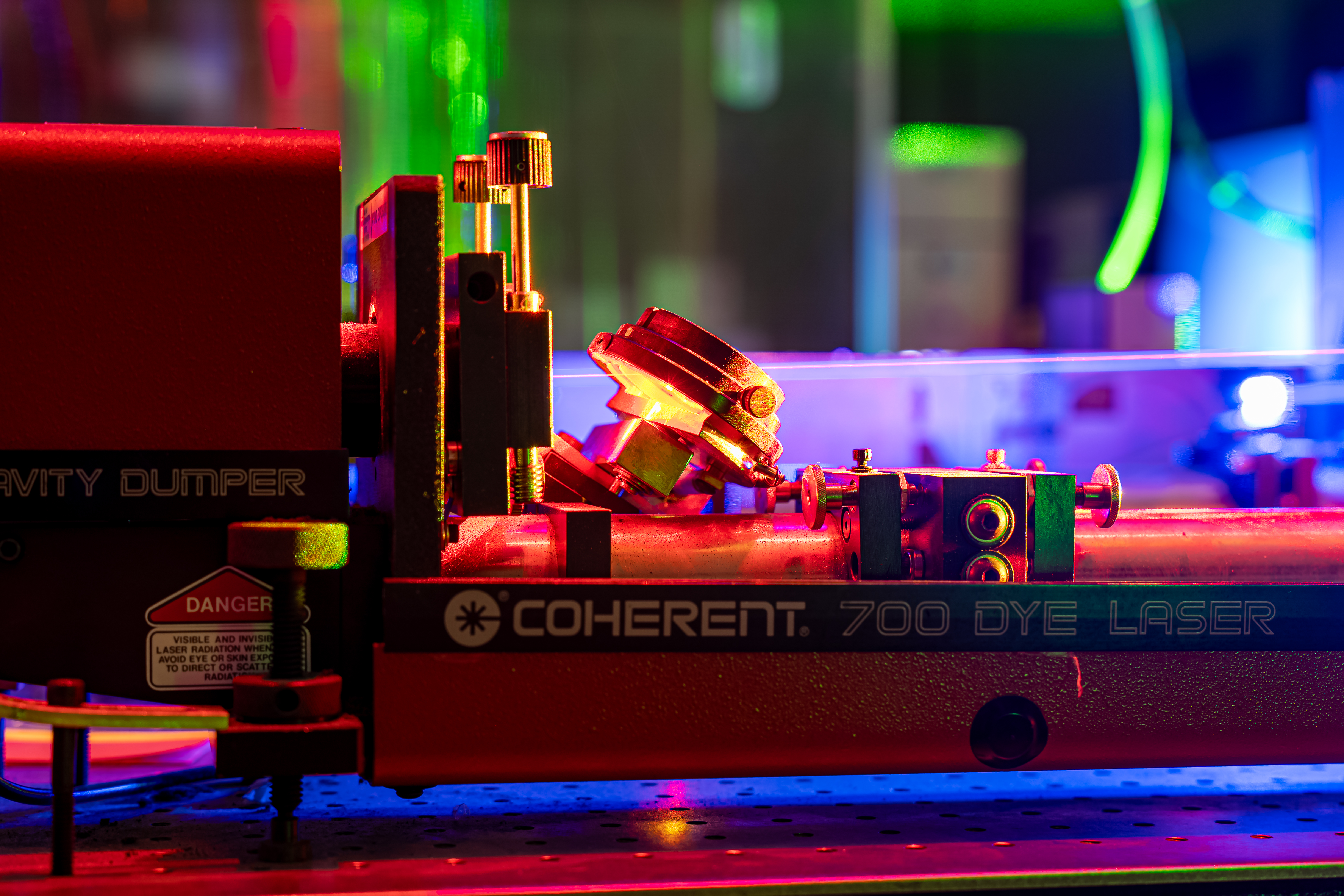Michigan State University chemist Gary Blanchard has received a grant from the National Science Foundation to continue his cutting-edge exploration of the piezoelectric effect in liquids. This award will provide $450,000 over three years and build upon an unprecedented discovery first reported by Blanchard and former doctoral student Md Iqbal Hossain in early 2023.
Piezoelectric materials generate electric charge under mechanical stress, and there’s a good chance you’ve interacted with piezoelectricity today.
The accelerometers in your car and personal fitness tracker use piezoelectric materials, as do the tiny mechanisms needed to start a stove, grill or lighter. They’re also found in more spectacular applications like sonar, ultrasound, inkjet printing and acoustic guitar pickups.
“Maybe you remember smashing a bit of quartz with a hammer in a grade school science class and creating sparks,” offered Blanchard, a professor and associate chair of education in the College of Natural Science’s Department of Chemistry.
“Those sparks — that’s the piezoelectric effect.”

Piezoelectric materials and their incredible range of applications have been studied for nearly 150 years, but only in solids.
To test piezoelectric properties, a material needs to be exposed to different forms of stress by being compressed, stretched and sheared — a difficult task when applied to liquids.
Beginning in 2015 as a collaboration with MSU colleague and electrochemist Greg Swain, Blanchard began to investigate the properties of ionic liquids, also known as room temperature molten salts — salts with very low melting points
Although we most commonly imagine salt in its solid form — a crystal lattice with atoms firmly locked in place — those atoms are free to flow about at ambient temperatures in ionic liquids.
“You wind up with a clear fluid with the viscosity of maple syrup that has all sorts of interesting properties,” Blanchard explained, noting that ionic liquids have been used in space propulsion and the sequestration of toxic gases.
“The problem is, from a molecular perspective, we still don’t know what’s going on.”

While examining the unique chemistry of these liquids, Blanchard realized he was witnessing behavior that appeared distinctly piezoelectric in nature. To test this hypothesis, ionic liquid was placed in a cylinder, compressed by a piston and tested to see if electric charge was created upon compression.
The resulting relatively large voltage was the first ever definitive evidence of a piezoelectric liquid.
“When you’re investigating something that appears to be impossible, and you rule out all possible explanations, you find yourself left with only one answer,” Blanchard said.
Blanchard determined that when pressure was applied to an ionic liquid, it became a crystalline solid, reverting to liquid again when pressure was removed. It’s this momentary transition to a solid that gives ionic liquids their piezoelectric potential.
Blanchard’s latest NSF grant will support his group’s efforts to more fully unpack the fundamental science behind ionic liquids and their piezoelectric properties. The award also reflects the importance of training the next generation of chemists in this pioneering field of chemistry, as well as the transformative potential piezoelectric liquids present to range of applications
When considering what areas of life these liquids could one day impact, Blanchard sees a wide horizon.
“You might place them in shock-absorbers in a car, so when you go over a bump, you generate a bit of electricity. Or perhaps under the carpet in airports, or the soles of shoes to help us charge equipment on the go,” Blanchard said.
“If you can convert any amount mechanical energy to an electrical charge, we’ll figure out useful ways to use it.”
This story was originally published by the Department of Chemistry.
About the MSU Innovation Center:
The MSU Innovation Center is dedicated to fostering innovation, research commercialization, and entrepreneurial activities from the research and discovery happening across our campus every day. We act as the primary interface for researchers aiming to see their research applied to solving real-world problems and making the world a better place to live. We aim to empower faculty, researchers, and students within our community of scholars by providing them with the knowledge, skills, and opportunities to bring their discoveries to the forefront.
Through strategic collaborations with the private sector, we aim to amplify the impact of faculty research and drive economic growth while positively impacting society. We foster mutually beneficial, long-term relationships with the private sector through corporate-sponsored research collaborations, technology licensing discussions, and support for faculty entrepreneurs to support the establishment of startup companies.
Is your company interested in working with MSU’s Department of Chemistry? Click Here.
